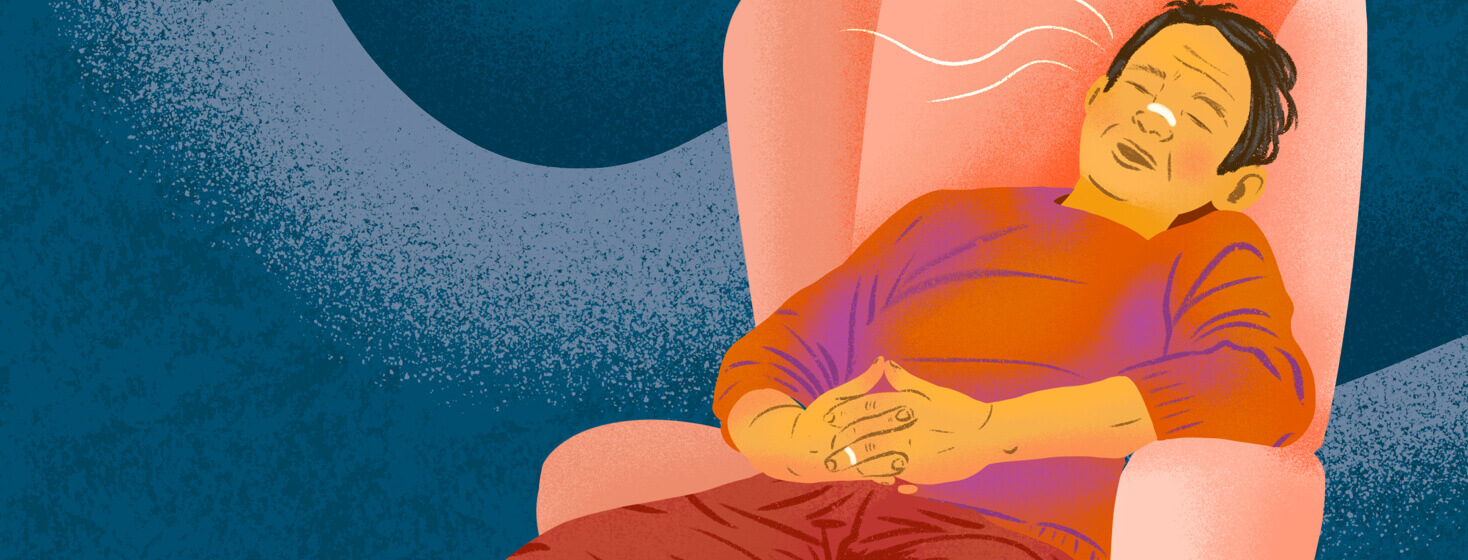Sleep Apnea and COVID-19
I finally got to a place where my sleep wasn't perfect, but it was better.
I got the temperature issue with my machine fixed, the setting was adjusted lower to make it more tolerable, and I saw my first "100 night" on the myAir app. Even though I didn't feel better, I felt that I was heading in the right direction.
COVID-19 made it impossible to use my CPAP machine
Then my son got sick with COVID-19, and then everyone in the house got it. I wasn't ready for COVID. Once I got sick, I had to immediately discontinue using the machine because the air blowing while I was constantly coughing and spitting up tons of green phlegm wasn't working.
While using my machine is definitely the preferred option that I'm trying to make a regular part of my sleep routine, it was impossible to use the machine while I was sick. I found a few things that helped during the 2 weeks – going on 3 weeks – that I was unable to use my machine.
Moving to a recliner and using Breathe Right strips
Instead of sleeping in my bed, the first thing I did was sleep in a recliner on my side to help keep my airways open as much as I could without the machine.
Despite sneezing and coughing, I purchased some Breathe Right strips and slept with 1 of those on my nose. The strips helped a little bit with the snoring. And minus the sinus pain from sneezing, they weren't the worst to use. I coupled the strips with an all-natural salve that is supposed to help with coughing and open your airways.
Using a humidifier to reduce my dry mouth symptoms
After the first night, I noticed my mouth was dried out when I woke up and the coughing was worse at night. I went to my favorite place for medical information online and I found that a humidifier could help with the coughing and put some moisture in the air.
I purchased a warm air humidifier and set it up right next to where I sleep. I also added a few drops of eucalyptus essential oil to the humidifier. That helped some with the dry mouth when I was waking up.
Monitoring my oxygen levels during the night
While dealing with COVID-19 and insomnia, I found a ring that measures your oxygen (O2) when you sleep and gives a little beep when your oxygen drops. I will say, the first 2 nights, it drove me absolutely crazy to the point I wanted to toss it in the trash. Once I made it to night 3, it wasn't as bad.
I would move and reposition myself and it would help bring my oxygen back up. I think even when I resume using my CPAP, I will continue using the O2 ring to see how my oxygen levels are during the night. The ring has a nice app so you can track your stats and it fits well, so it stayed on my finger all night.
Quality sleep was what I needed most
On a daily basis, balancing sleep apnea, restless legs, and migraines is a struggle. Even though they are separate conditions, they are all interconnected, and the most important thing is quality sleep which I haven't had in decades.
Then, throw in all these conditions with COVID-19, and it makes good sleep impossible and requires a lot of changes to try to make the best of it. Adding the humidifier, the nose strips, natural salves, positional adjustment, and the O2 monitor helped me make it through the longest period of not being able to use my machine.
Have you had COVID-19? If so, were you able to continue using your machine? What tips or tricks would you have for someone with sleep apnea and COVID-19?

Join the conversation